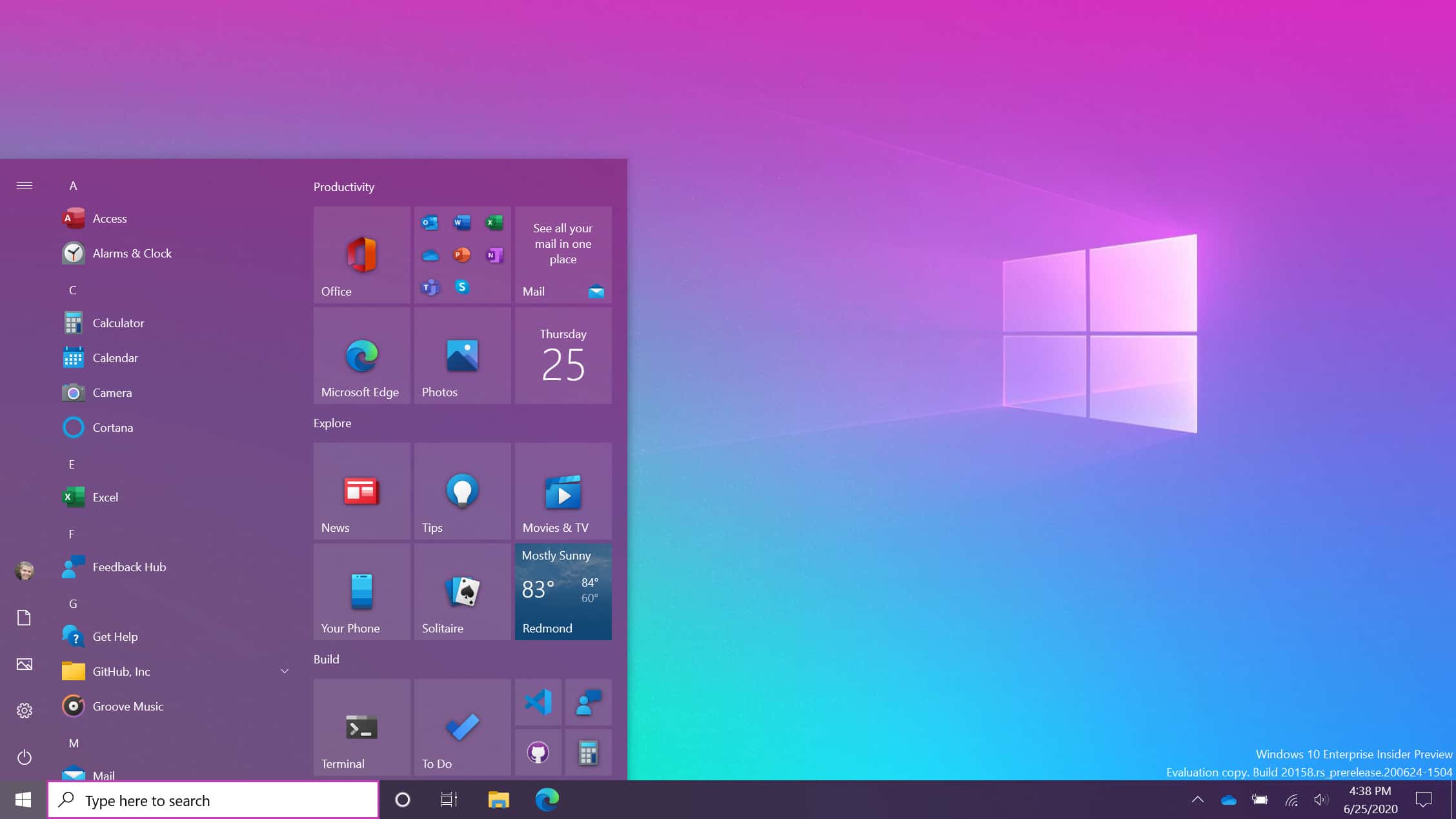Microsoft could be preparing to give the interface of the Start Menu and Action Center in Windows 10 a major overhaul according to a new code reference spotted in preview builds of its operating system.
As reported by Windows Latest, the software giant recently published Windows 10 Build 20197 to Windows Insiders in the program’s Dev Channel.
Senior program manager of the Windows Insider Program Brandon LeBlanc offered further insight on the preview build’s most important feature in a blog post, saying:
“We mentioned we had more Settings work on the way, and here’s the next one – as of today’s build you’ll now be able to manage your disks and volumes from within the Settings app. This includes tasks such as viewing disk information, creating and formatting volumes, and assigning drive letters.”
However, in addition to a new Disk Manager and long list of bug fixes, the preview build also includes references to ‘WinUI’ for both Windows 10’s Start Menu and Action Center.
Win UI
A scan of the Microsoft Program Database (PDB) files in Windows Build 20197 shows that the software giant is currently testing a number of new features relating to Windows 10’s user interface including WinUIOnDesktop, WinUIDesktopActionCenter and WinUIDesktopStartMenu.
For those unfamiliar, Win UI is Microsoft’s next generation user interface platform for Windows Windows 10 and Windows 10X. The company also provided more details on WinUI and how developers can leverage the new framework in a support document, saying”
“The Windows UI Library (WinUI) is a native user experience (UX) framework for both Windows Desktop and UWP applications. By incorporating the Fluent Design System into all experiences, controls, and styles, WinUI provides consistent, intuitive, and accessible experiences using the latest user interface (UI) patterns. With support for both Desktop and UWP apps, you can build with WinUI from the ground up, or gradually migrate your existing MFC, WinForms, or WPF apps using familiar languages such as C++, C#, Visual Basic, and Javascript (via React Native for Windows).”
Based on the references inside its latest preview build, Microsoft may end up allowing Windows 10’s Start Menu and Action Center to use UI components from Win UI in an effort to improve consistency across its entire operation system.

